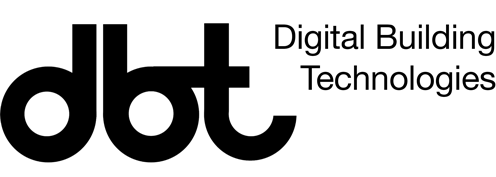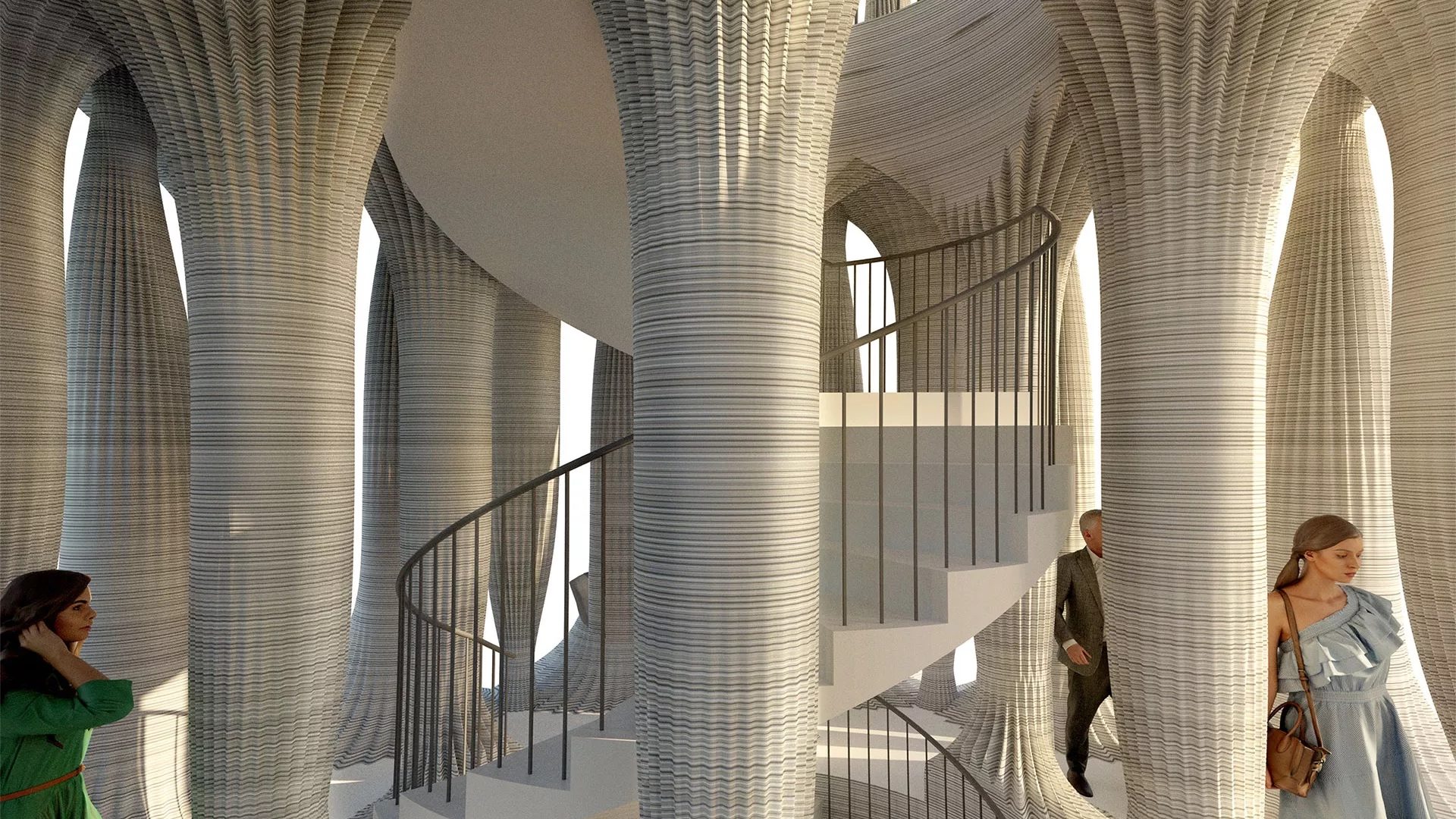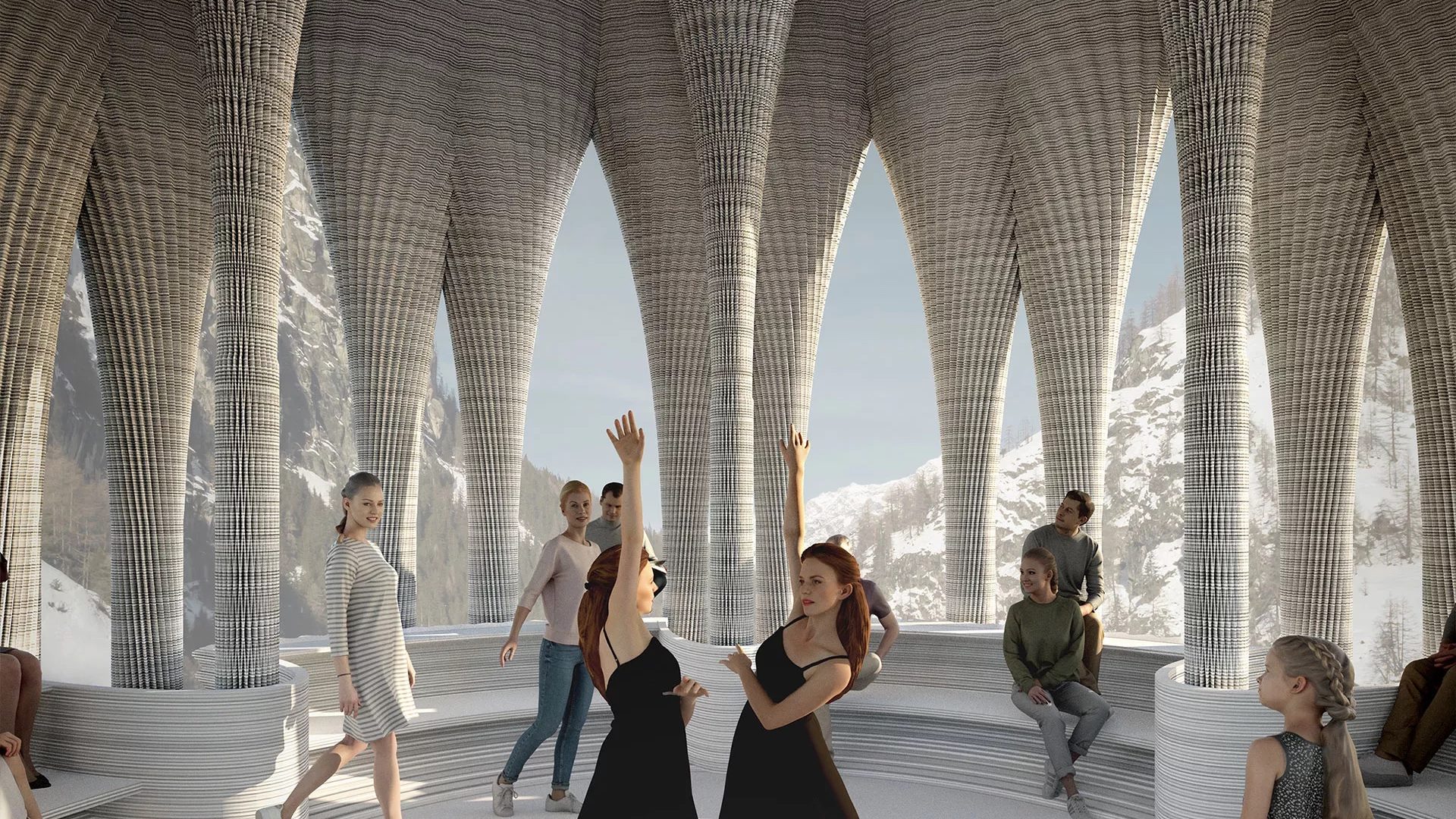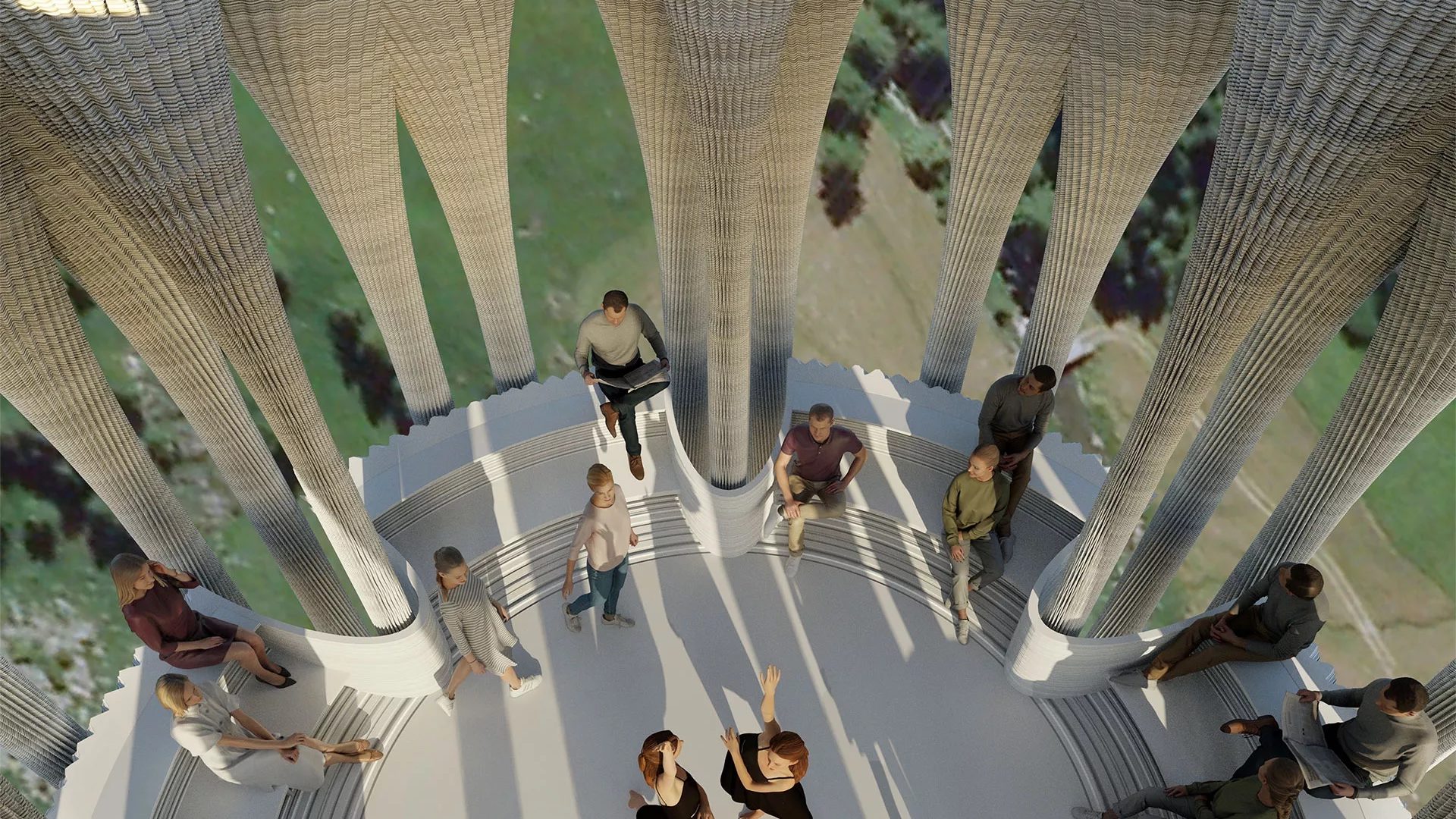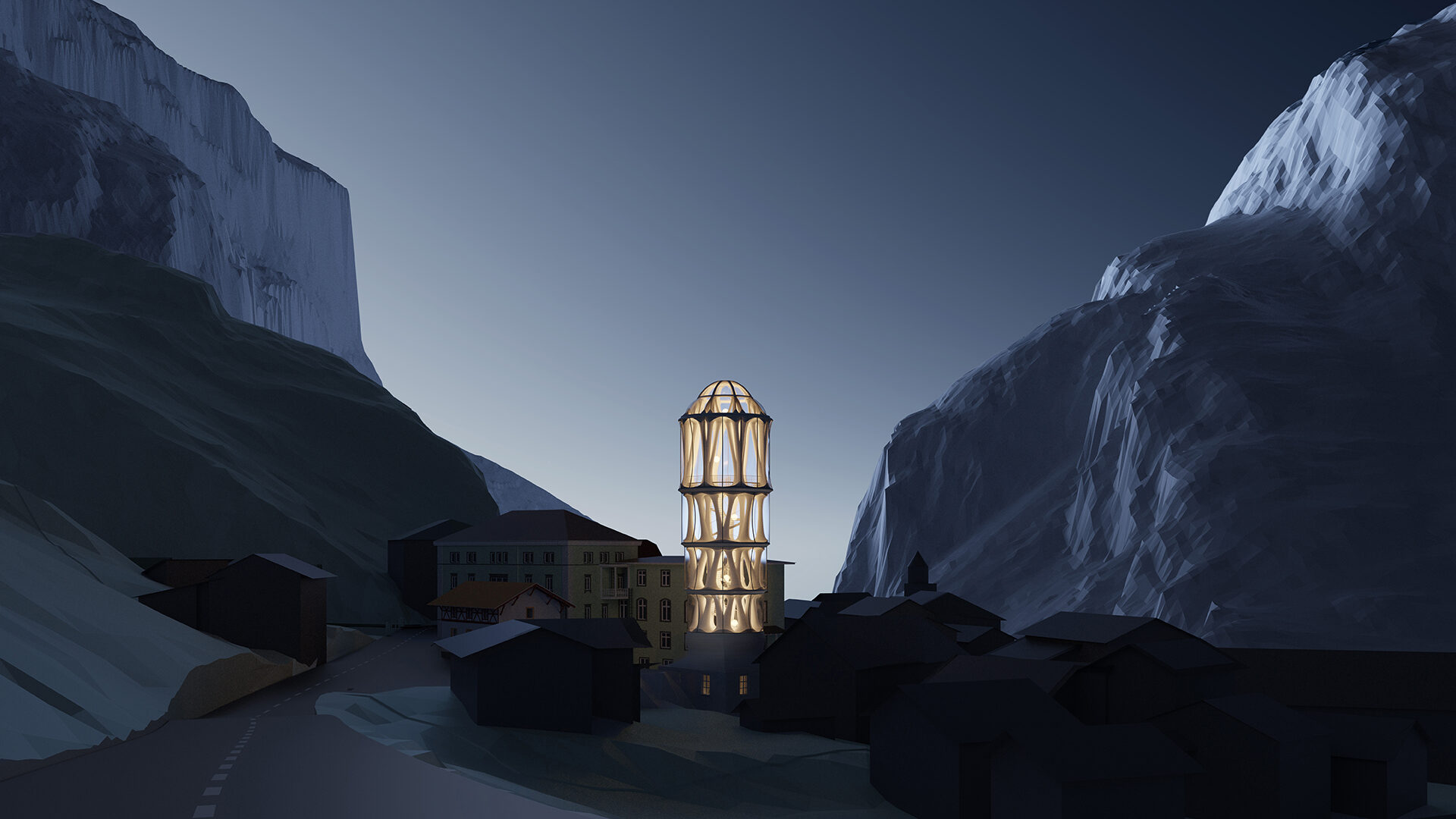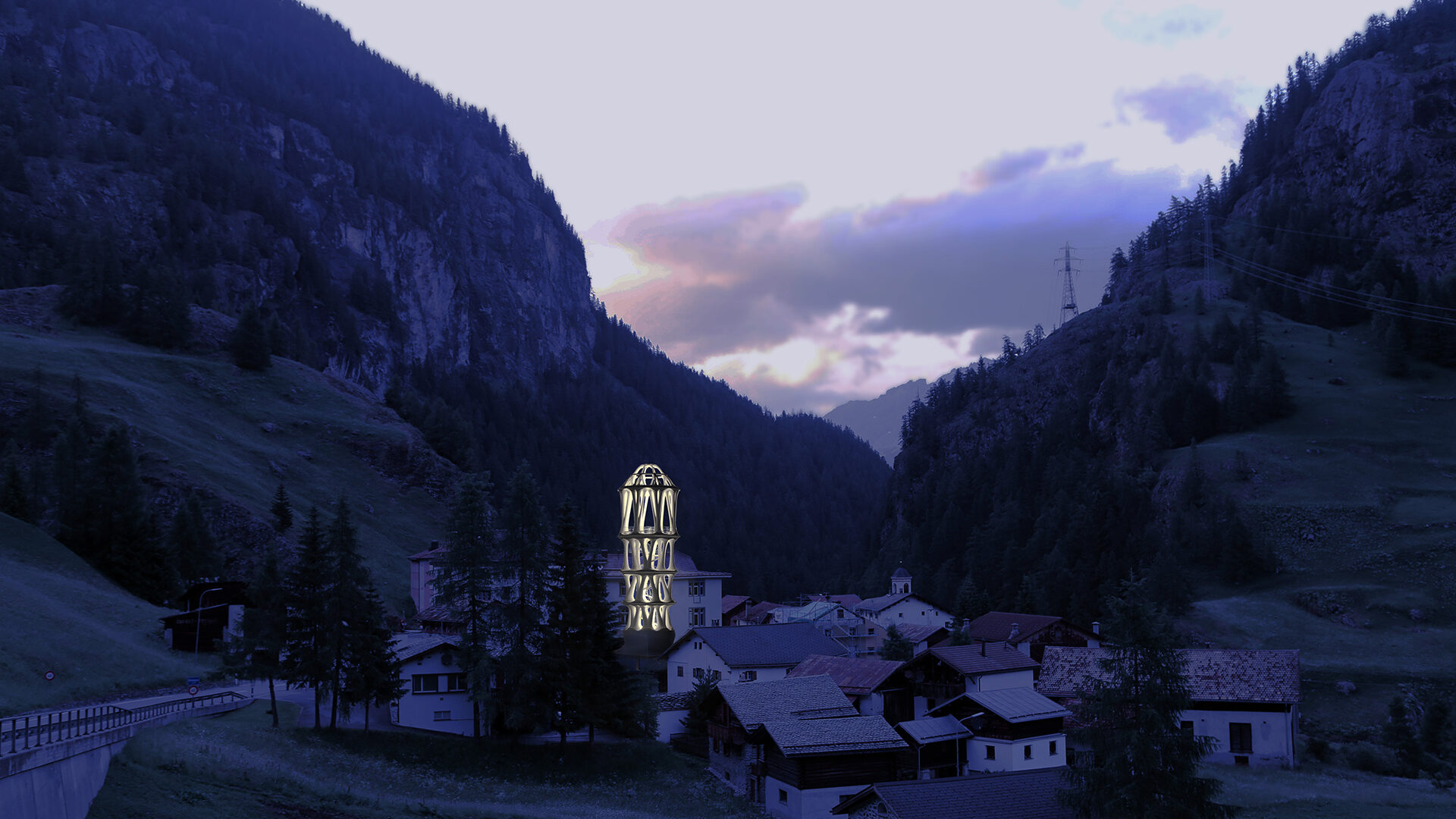For updated informations, visit: www.tor-alva.ch
Tor Alva (“Weisser Turm”) is a 30-meter tall, 3D-printed building situated along the Julier mountain pass in the remote village of Mulegns, Switzerland. Designed for Fundaziun Origen, the tower offers space for art installations and for music and theater performances. Visitors ascend a spiral staircase through a series of colonnades to reach the chamber stage on the top floor. The tower’s bold wealth of shapes is reminiscent of the great craftsmanship of the Graubünden master builders of the Baroque era, who had a decisive influence on the region’s architecture.
Objectives
Tor Alva aims to bring new life to a village in decline. It tells of the rich cultural history of Mulegns and its surroundings. As a cultural destination, it promotes gentle yet substantial tourism. Large parts of the tower will be built involving industry partners from the region. Thus, the tower brings valuable digital skills to the mountain regions and advances local trade.
Fabrication
Tor Alva demonstrates the groundbreaking possibilities of computational design and digital fabrication, which will fundamentally change conventional buildings in the years to come. Using robotic concrete extrusion processes, the concrete can be applied specifically only where needed, reducing material consumption by half. The process no longer requires any formwork. Eliminating the need for formwork offers new degrees of design freedom regarding expressive shapes, surface detailing, and hollow features. It also allows for one-of-a-kind production. Investigating concepts of circularity and reuse, the tower will be constructed with disassembly in mind to be rebuilt at another location.
With its spectacular architecture and innovative technology, Tor Alva acts as a beacon for travelers on the Julier Pass. As a new cultural destination, it welcomes visitors from the region and far beyond.
Design Concept
Tor Alva consists of a series of abstract, atmospherically dense zones designed as a vertical enfilade. This vertical space allows for various cultural uses and can host exhibitions and installations. Tor Alva’s hall on the top floor contains a stage with seating for 45 visitors and is designed for concerts and theater performances.
The tower’s central design element is a series of 32 3D-printed branching columns consisting that support the different levels of the building and form the tower’s façade. In the lower zones, heavy, squat columns create narrow, imposing spaces. As one ascends the central spiral staircase, the space becomes noticeably lighter and airier. Each column has two levels of ornamentation: a horizontal material-driven ornament derived from the extruded concrete printing process and a super-imposed spiraling texture that emphasizes the building’s height.
The different column geometries enable strong spatial experiences and are held together by the unity of their material. Overall, the building, made of white concrete, appears filigree and light. The bright materials and the bold structures promote the architectural play of light and shadow. Tor Alva, with its idiosyncratic openings, appears as a lantern at night, and it becomes a lighthouse set along the old Julier Pass road.
Fabrication Details
Tor Alva will be 3D printed using a concrete extrusion process which was collaboratively developed at the Swiss Federal Institute of Technology (ETH). At a total height of 30 meters, including the existing base, the tower will become the world’s tallest 3D-printed structure. In this novel fabrication process, a robot successively applies thin layers of soft concrete through a nozzle. The material is soft enough to bond together and form homogenous components while hardening quickly enough to support the successive layers. The 3D-printed columns of Tor Alva will be reinforced with both horizontal and vertical rebar, ensuring structural strength while keeping a hollow core to reduce weight and save concrete.
Digital technologies are also used in the design process. The entire structure of the tower is designed using custom software that allows the precise definition of the geometry and can send the necessary data directly to the printing robots. This technology enables non-standard, tailor-made elements to be manufactured efficiently. These types of forms would be nearly impossible to produce at this scale using conventional technologies.
In this new construction process, the tower will be assembled from 32 individually printed concrete elements. Elements are only filled with concrete where it is structurally required, which greatly reduces material use. This construction method avoids waste because no formwork for pouring concrete is necessary. The dismantling of Tor Alva is already designed at the planning stage so that it can be disassembled and rebuilt elsewhere.
PROJECT LAUNCH AND TIMELINE
The Tor Alva project was officially launched by Fundaziun Origen on June 22nd, 2021, in Mulegns, Switzerland. The launch ceremony was attended by Swiss President Guy Parmelin, as well as the President of Graubünden Canton Mario Cavigelli, and Surses Municipality President Leo Thomann.
The projected timeline for the White Tower is as follows:
| 2021 | Planning |
| 2022 | Construction of a full-scale demonstrator |
| 2023-2024 | Printing and assembly of the tower |
| 2024 | Opening of the tower and first performances |
| 2029 | Disassembly of the tower |
